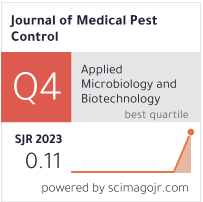Survival status analysis of cases with advanced schistosomiasis in Wuhan City from 2001 to 2022
Abstract
Objective: To analyze the survival status and influencing factors of patients with advanced schistosomiasis in Wuhan City over a 21-year period (2001–2022), aiming to provide data for improving clinical management and prognosis.
Methods: A retrospective cohort study was conducted on advanced schistosomiasis cases registered in Wuhan City from 2001 to 2022. Patient demographic data, clinical characteristics, treatment history, and survival outcomes were collected and analyzed. Survival rates were estimated using Kaplan-Meier methods, and risk factors affecting survival were identified through Cox proportional hazards regression.
Results: The overall survival rate of advanced schistosomiasis patients decreased progressively over the study period. Key factors significantly associated with poorer survival included older age at diagnosis, presence of comorbidities, severity of liver fibrosis, and lack of timely treatment (p < 0.05). Early diagnosis and intervention were associated with improved survival outcomes.
Conclusion: The survival of patients with advanced schistosomiasis in Wuhan City remains a public health concern. Early detection, comprehensive treatment, and management of comorbid conditions are crucial to improving long-term survival in this population.
Full text:
PDFReferences
Wang S., Jia X., Zhou Y., Li Y., Liu C., Wang H., Luo H.



